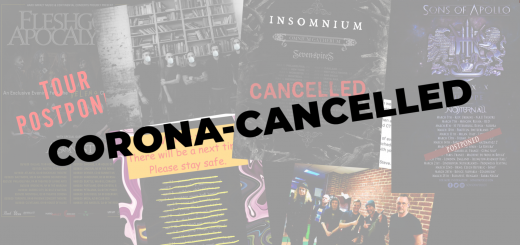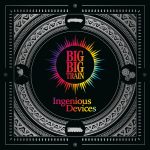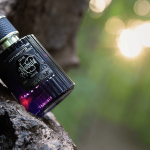Is Dolby Atmos and Spatial Audio the way forward?
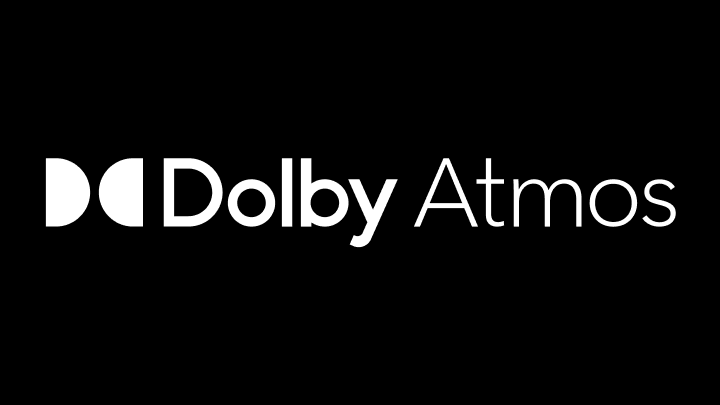
The Dolby Atmos Logo
The words “Dolby Atmos” instil fear for some mixing engineers and suggest an “easy” paycheck for others. A novelty for many listeners, but a transformative way of appreciating art for others. Is it really all it’s cracked up to be as the new listening medium?
For the purposes of this article, I’m going to be talking about Dolby Atmos, but many of these thoughts are applicable to other forms of the medium such as Apple’s Spatial Audio system.
As much as I’ve heard the split opinions from all sides of the coin from all areas of the music production industry, there’s no shying away from the fact that Dolby Atmos is here, and it isn’t going anywhere. In some form of another, many of us are already engaging with it unknowingly on a semi-regular basis. For me personally, on the odd occasion that I stream music instead of listening to my physical library, many albums are now Dolby Atmos enabled – such as Chic‘s debut album below. Some may have seen ticketed listening events for albums at venues fitted out with Dolby equipment, more on that later, and also have seen films in cinemas with this type of sound mixing.
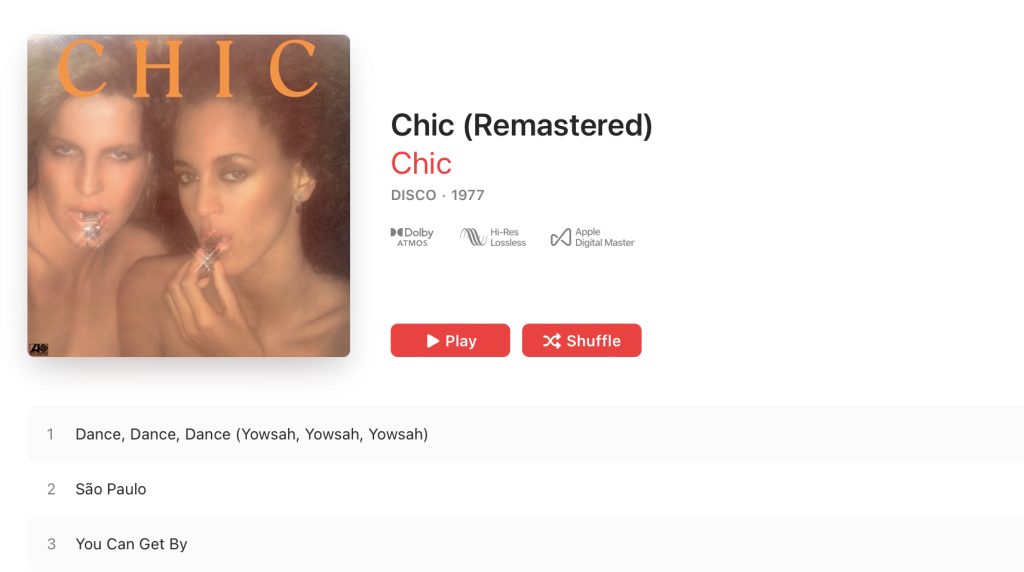
Dolby Atmos mixes appearing inside of Apple Music
What differentiates Atmos from mere 2, 2.1, and 5.1 audio consumption setups is that this utilises a new plane inside the room, the ceiling, for an added dimension of audio projection into one’s ears. Diagrams to follow…
So how easy is it to engage with a Dolby Atmos mix?
Well, in my experience, the ability to partake in this next generation of audio is reserved for those with the money and physical space to be able to fit an atmos system in at home. Dolby has a range of guides on their website resulting in one of the most absurd diagrams below, an 11.1.8 setup which is quite frankly just completely unrealistic in any normal person’s home. And that’s before you consider the cost of the speakers.
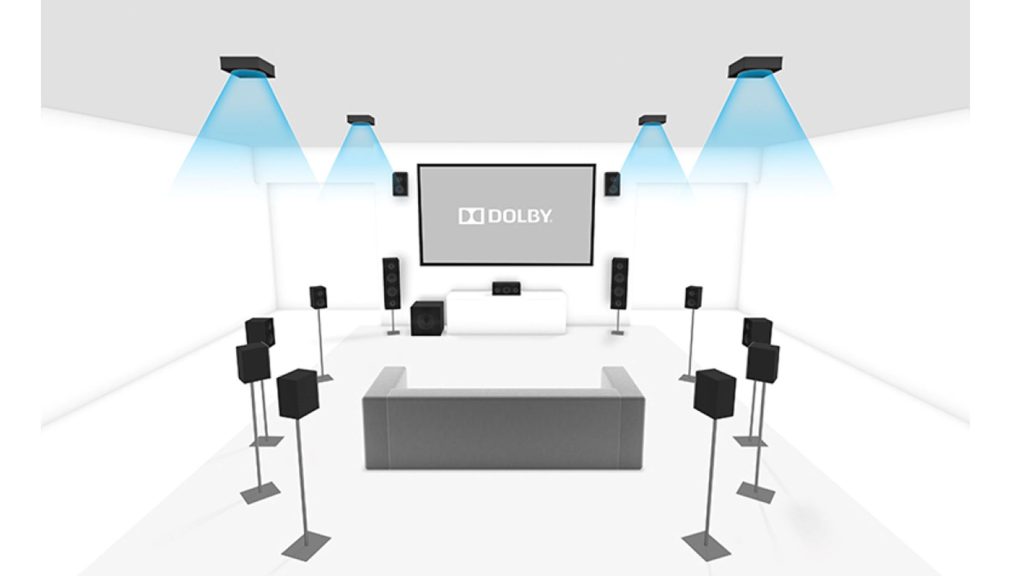
An 11.1.8 Dolby Atmos Setup – Source: Dolby.com
Now I’m a bit of a youngster, so I wasn’t really around to appreciate the discourse around 5.1 surround sound, but I imagine it is very similar to the discourse around Atmos. There are different levels of Atmos you can engage with that are less excessive, such as the 2.1.2 setup, as well as soundbars (which I would argue probably aren’t really giving you very good Atmos experience), that promise to deliver everything in one. This is probably the most practical solution for your average joe that wants to get half way towards Atmos without rearranging the entire living room.
Another simplification that will get you closer to a “true” Atmos experience, but still likely cost an arm and a leg, is to use up-firing speakers – as opposed to mounting ones onto the ceiling yourself and running cables up the walls. Maybe a quick win for those who already have 5.1 surround sound setups.
If you aren’t familiar with up-firing speakers, because honestly, who is? The graphic below from the Dolby website does a bit of visual explaining. The idea is, is that by firing audio upwards from the ground, this then reflects back down on the listener creating the 3D space the Atmos is known for. However, this isn’t advised on high ceilings.
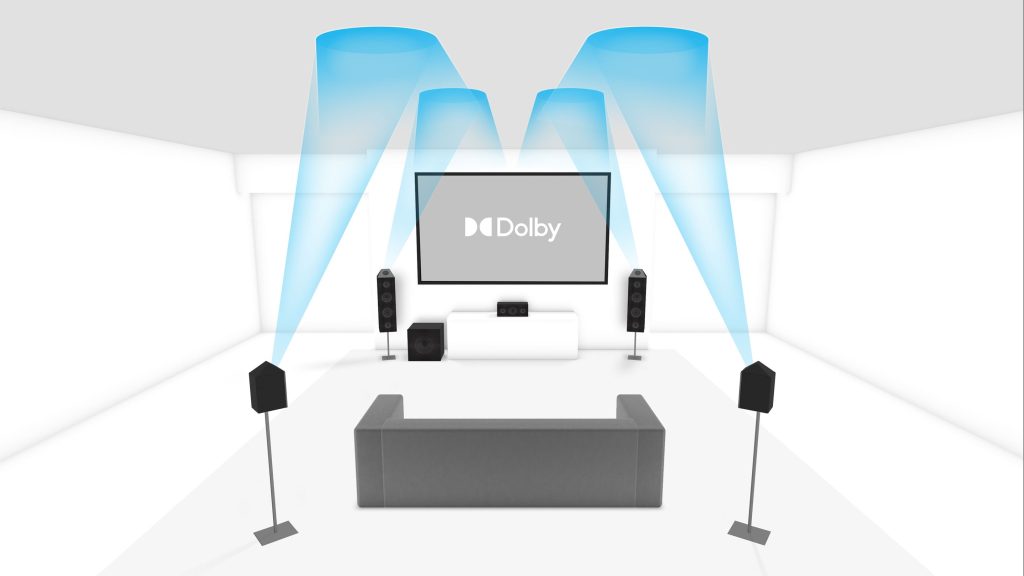
A 5.1.4 Dolby Atmos setup – Source: Dolby.com
So to answer the question how easy is it to engage with a Dolby Atmos mix – the answer is not very if you’re trying to do it at home.
That sounds expensive. So why bother? Well…
Artists like Steven Wilson have been singing Atmos’ praises for years now having remixed multiple classic albums into this new format of listening, taking time and care to be faithful to the original, but allowing for more space to be created in the mix to allow for a deeper understanding of a record to the end listener. Classics such as We Are Family by Sister Sledge, Moondance by Van Morrison, Take On Me by A-ha – as well as proggier records like King Crimson‘s In the Court of the Crimson King have all been touched by Steven to bring them into the Atmos fold, but still the question remains, who is actually able to listen to them properly? Why bother remixing them at all? Does anyone care?
Well, in short, yes. There is a very strong argument to be made for older records being remixed, and a great historical precedent for such. It allows for modern production techniques, plugins, and hardware, to all be utilised together to create a “better” (subjective) mix than what engineers were able to do in the 70s and 80s. Music fans who have lived with records for decades can enjoy an added level of depth, if they have the right setup, of their new box set – and Atmos is just another evolution of this. But…
…with the vast majority of music listening done on headphones in places with plenty of external noise, gyms, offices, trains, cars, it seems foolish to go after personal listening experiences using the Atmos system. Especially where the leading music streaming platform Spotify doesn’t natively support Dolby Atmos mixes. And for bands kicking off their new records in the current day where a social media presence is possibly more important than the actual substance of the music itself, why blow a load of your production budget on paying an engineer to create a second mix of a track that’s already been finished, instead of spending money on creating more meaningful promotional material.
Apple Music recently told artists and record labels that it would pay them 10% greater royalties for music made in spatial audio. Counter-intuitively, the increase is not tied to how much spatial audio is listened to, but rather to what proportion of a label’s output is in this format.
Smaller record labels say Apple Music has not added money to the royalty payout pool to fund its 10% incentive for spatial audio, and instead it is reducing how much it pays all but the biggest firms.
Source: Apple Insider
Oh. Right. Okay.
So there is a forced financial benefit to the artist to release mixes in this format as now the 2nd biggest music streaming platform has shuffled around what revenue artists get based on the type of mix of their track. I guess that answers that question then! Incentive has been created here, not necessarily by actual demand, and not only in the world of streaming, but also in the world of physical media. Regardless of the quality of a mix, artists can re-sell older records that are now Atmos enabled, or require audiences to pay a premium for a physical edition of an Atmos mix to go with their record.
But is it actually a better listening experience? Well, maybe.
In the situation of films that make it to the cinema, I am fully understanding and on board with using 3D audio systems like Atmos. It’s the perfect environment for it, with plenty of dynamic sounds that happen around you having the ability to be projected around the room in a more nuanced way. And the movie industry benefits from economics of scale when installing these kinds of setups. Thousands of patrons will enjoy those systems, as opposed to an individual at home. But this is a music site, so this is slightly less of a consideration.
I’ve been sceptical about Atmos for a long time, the actual tangible benefits to making music you listen to elsewhere sound worse, and the idea of being stuck in a single 1m² zone inside of your living room unable to get on with anything else because if you move, you’ll be out of alignment, the cost factor of acquiring vast numbers of speakers, the space factor, the additional cost of acquiring specific Atmos mixes to play on the system, just doesn’t land that highly for me when it comes to music experiences. But, is it better? Is there a time and a place for Atmos? Well…
Many artists have been putting on fan experiences, sharing their latest records Atmos mixes with fans in the physical plane at venues set up and specifically tuned for a Dolby Atmos experience. One of these artists is Steven Wilson. For his latest record The Harmony Codex, Steven has been putting on fan events around the globe (read: London, NYC, LA), for people to experience his music in a slightly different way with this release. And with no signs of a tour, it was Atmos all the way for this record.
But this wasn’t just a Dolby Atmos listening experience, this was a true premium fan experience. An intimate opportunity to indulge one’s self in something that few others will ever be able to – and I was lucky enough to attend one of these events – equally also featuring a Q&A from the man himself. It was in a nice venue with big comfy seats, a bar, snacks, a welcome change from venues with sticky floors.
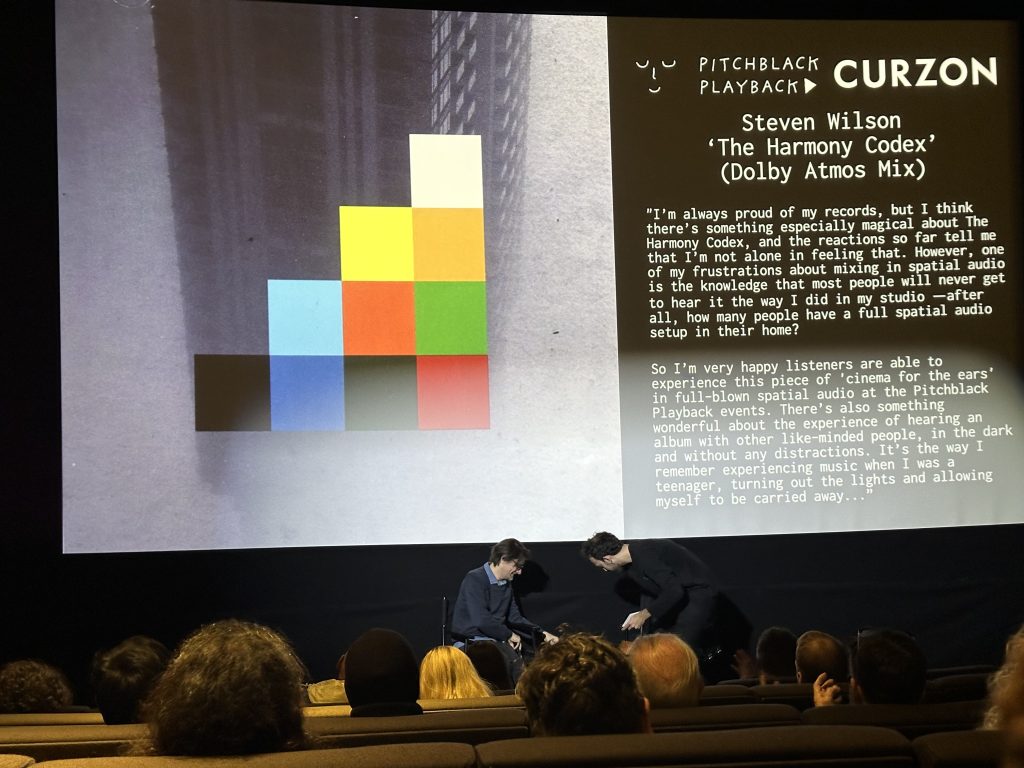
The Steven Wilson listening experience
The Harmony Codex is more of a cinematic aural experience as opposed to a musical one. It’s an interesting record with masterful sound design, and does take advantage of Atmos’s benefits with the 3D space that the additional speakers provide. I thoroughly enjoyed getting to hear it all in a “pitch-black playback” experience where all of the lights in the room are turned off, and all you can do is immerse yourself inside of the music – a novel yet enjoyable concept. But…
This particular event was in a somewhat large cinema venue which I feel was far easier to be “off-centre” to obtain that premium Atmos listening spot. Having one of the rear speakers right behind my head meant that some parts were far louder than others coming from 20 meters away on the other side of the slightly cavernous room. I found that the Atmos side didn’t really add much to the experience, and actually became a distraction in some points of the record, and I think that’s entirely because of where I was sat in the large space which is absolutely a critical flaw in this technology.
And having the listening experience followed by a Q&A with Steven Wilson, having him sing the praises of Atmos, outwardly calling it the next generation of listening, led to much of the experience being a bit shallow. With him angling that The Harmony Codex was the record to test your new home Atmos system to see how far it could be pushed, the event was more of a sales pitch rather than a listening experience. But then Steven has a vested interest in making Atmos work given the majority of his work these days seems to just be him taking classic records and placing them inside of the Atmos experience. So is it really that good? Or is Steven just trying to get more work? I digress.
Recently I went to an early album preview of the brand-new Big Big Train record The Likes of Us – this is a prog website after all – which provided another opportunity for an Atmos experience. And this time something clicked when the Atmos kicked in. I (wrongly) am not hugely familiar with the band’s historic discography, and I hadn’t listened to their new record before this evening – Which is absolutely cracking might I add.
I entered the venue with a small handful of other individuals, ready to listen to this record in a secluded space that had been tuned for Atmos listening counting at least 15 speakers around the seating area, no more than . We were led into the venue, shown a bar, and reasonably comfy chairs, and the band themselves were there too sharing in the experience, chatting with attendees, and getting warmed up for their post-album Q&A session.
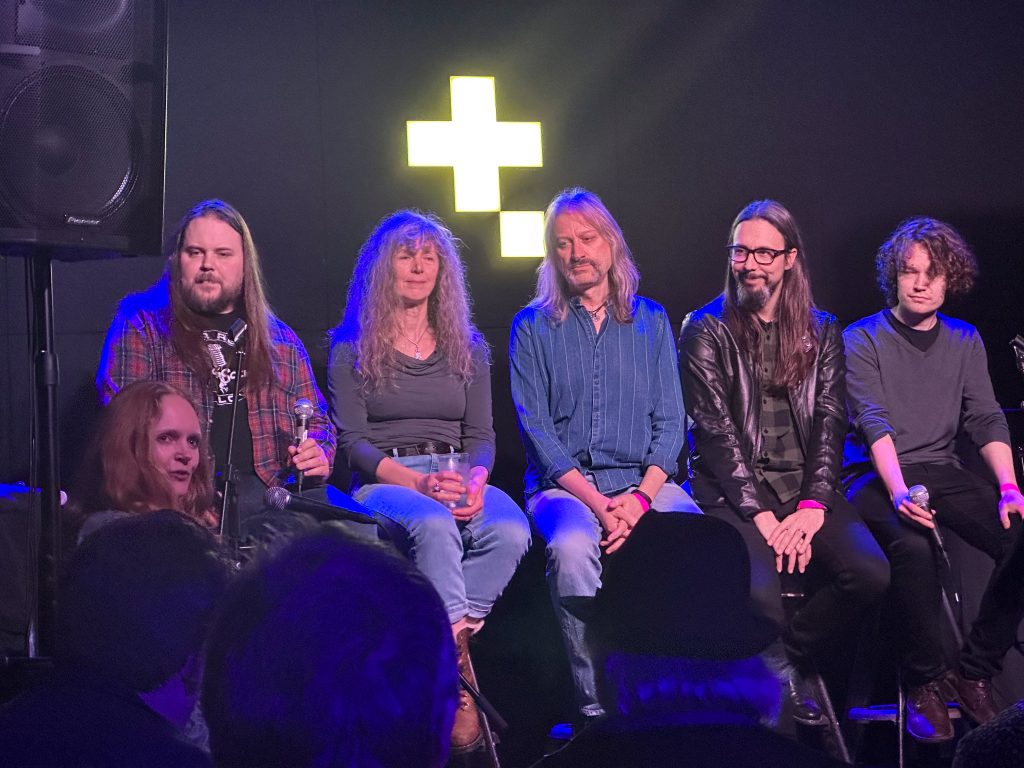
Big Big Train took questions at the end of the listening session
Big Big Train‘s listening experience was very different. It was a rock album from a rock band, rather than Steven’s more ambient and electronic approach to music on his current record. So as the music began I went in with a slightly sceptical head once more, expecting an interesting record from a band with an incredible reputation, but maybe an average listening experience. And I am very thankful to say, that I was wrong.
In the words of an audience member in the front row, “Well fucking hell”, who then subsequently led the room in a round of applause, it’s safe to say I was a little bit blown away.
What clicked this time was that in this intimate space, I was in the music. The most immediate change I noticed was that the kick drum wasn’t in the middle, as it so typically is when mixing in stereo. The kick drum was all around me, with the bass frequencies surrounding my ears like a warm blanket. I was encompassed with other members of the audience, thoroughly enjoying this shared experience of hearing something brand new for the very first time.
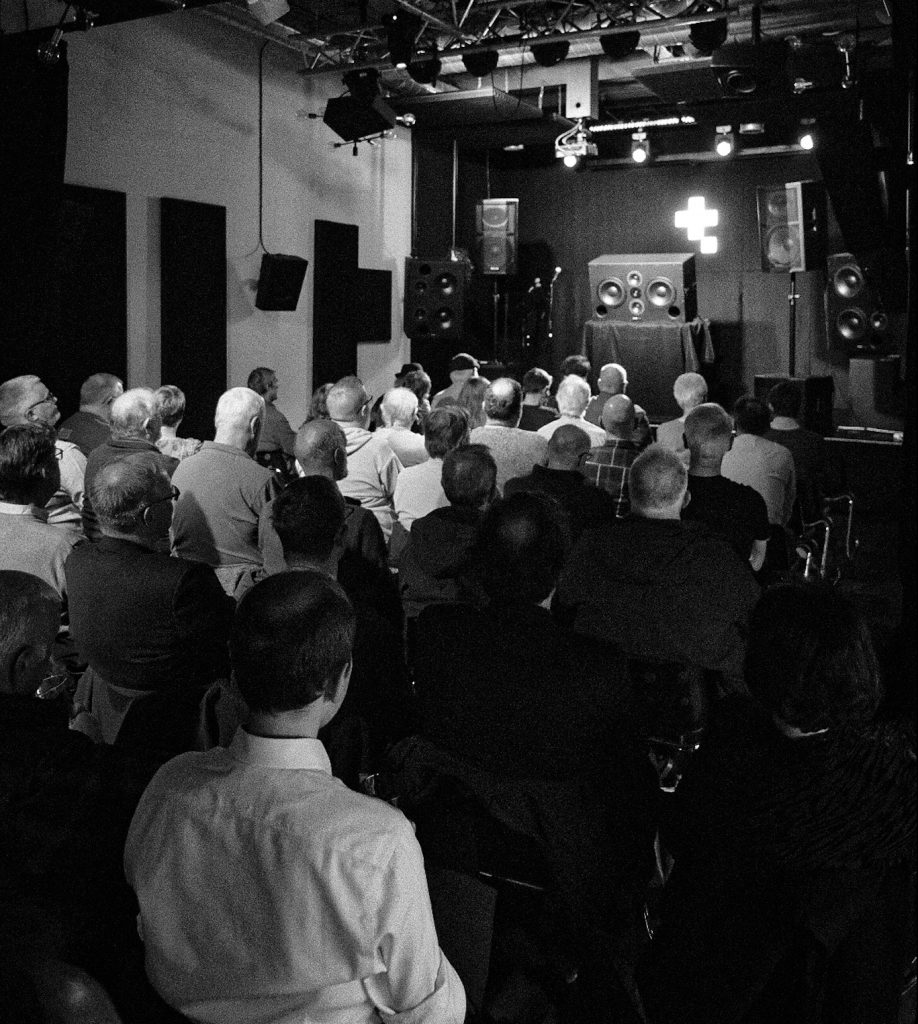
Source: Big Big Train Facebook Page (Photos by Crystal Spotlight)
The epic choral harmonies across the record were easily digestible. I could focus on certain areas around me and pick out certain harmonies clear as day. Almost akin to old-school church performances when choirs would split up around the building to create surround sound experiences during their performances to make the composed antiphony even more dramatic.
I left that evening a new fan of the band, getting to know more about all of them through the Q&A, in addition to sharing my enjoyment of the music with others around me. Could that have been achieved in stereo? Probably. Would it have sounded as good as it did in that space? Possibly. But would I have been as immersed in the music as I was, having my body surrounded by wiggly air in any way that I tried to point my ears? Absolutely not. And I really think that this is where Atmos shows its strengths.
So what’s the conclusion?
I’m not sure. Do I want to run away and spend thousands of pounds on an at-home Atmos experience? I’m not sure. I’m definitely more tempted by it now after doing research for this article than I ever thought I would be, but it won’t make any difference to the vast majority of my 800+ record collection, and I’m not sure I fancy re-buying all of my favourite records once again to gain a slightly different mix that I can’t easily share my enjoyment of with other individuals.
As the vast majority of my music listening is done on the move, or at my desk through studio monitors, putting that amount of money into one listening space versus investing in other more premium listening options like the Audeze headphones which can be taken anywhere and mean that I don’t need to reconstruct my living room to be able to use them properly. It’s far more of a no-brainer investment as they blew my mind a lot more than Atmos did, and made vast greater improvements on the listening experience to albums in stereo. A mix format that already exists for 99% of records out there.
I do however absolutely believe that there is space for Atmos in smaller shared venues. In the future I hope to see more small venues taking on listening parties in Atmos of classic albums, allowing people to take a moment to pause and indulge themselves properly in music, away from the distractions of modern touch screen devices that so easily take our focus away from the art around us, and enjoy music communally with friends.
This is where Atmos shines. Not too big, not too small, a goldilocks happy medium where the average punter can benefit from economics of scale, and be sure that they’re getting a good listening experience, rather than just throwing money and adding an increasing number of speakers to their living rooms in the hope that eventually, after throwing out most of the furniture in the room, you’ll be able to hear the album just like the mixing engineer did in their finely tuned floating room near clinical studio environment.

